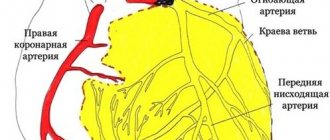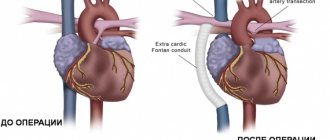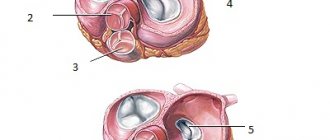Vegetovascular dystonia (or VSD for short) is a psychosomatic problem in which the functioning of the autonomic system, which is responsible for balance in the body, is disrupted. At the same time, the circulatory system “fails”, blood pressure and vascular tone decrease - therefore, all organs receive the necessary substances in smaller quantities than required. This leads to disastrous consequences, such as blood stagnation, brain hypoxia, and decreased organ activity. One of the varieties of this disorder is VSD of the hypotonic type. It is characterized by disruption of the cardiovascular system, decreased blood pressure, and decreased blood flow to all organs.
Young people who lead a sedentary lifestyle are more often susceptible to VSD of the hypotonic type. But this type of vegetative-vascular dystonia can also affect the older generation.
Types of vegetative-vascular dystonia (VSD)
Depending on how the cardiovascular system reacts to a disorder of the autonomic nervous system, 4 types of VSD are conventionally distinguished: hypertensive, hypotonic, cardiac and mixed. A more detailed study of the signs of vegetative-vascular dystonia made it possible to identify 3 more types of disorder: vagotonia, cerebral-type VSD and somatoform dysfunction.
This typology is outdated, however, it allows you to classify all symptoms of VSD. The problem of diagnosing autonomic dysfunction is acute, and patients often become victims of ignorance or inattention of doctors. Let's figure out what symptoms may indicate the presence of one or another form of autonomic dysfunction.
Causes of neurocirculatory dystonia
Today it is believed that there is a predisposition to the development of neurocirculatory dystonia, but for its formation it is necessary to be exposed to certain external factors, the list of which is very large.
- Acute and chronic infections, accompanied by intoxication and, as a consequence, disruption of neurohumoral balance.
- Hormonal changes that may be associated with puberty, pregnancy, the menstrual cycle, etc.
- Stress and other psycho-emotional stress.
- Many diseases of internal organs that disrupt homeostasis.
- Endocrine diseases (diabetes mellitus, pathology of the thyroid gland, adrenal glands).
- Diseases of the nervous system, head injuries.
- General fatigue.
- Bad habits (alcohol, smoking).
- Drinking large amounts of caffeine.
- Chronic intoxication as a result of any harmful substances entering the body (often happens at work).
- Staying in stuffy rooms, in the heat, especially in direct sunlight.
VSD of cardiac type
In the cardiological (as well as in the hypertensive) form of autonomic dysfunction, the diagnosis will most likely show obvious sympathicotonia, that is, functional tension in the work of the sympathetic department of the ANS. A distinctive feature of VSD of the cardiac type is pain in the heart area (stabbing, pressing or burning sensations in the chest area). Signs may resemble those of an angina attack or myocardial infarction. But upon examination, cardiac pathologies are not detected.
The cardiac type of reaction to a vegetative-vascular disorder is characterized by: tachycardia, cardiac arrhythmia, false pain in the heart area, as well as respiratory arrhythmia and asthma attacks. It is important to understand that with VSD, pain in the heart area is not a harbinger of a heart attack and does not in any way affect the cardiovascular system, which will be confirmed by the patient’s echocardiogram. Cardiac rhythmography is very effective in diagnosing this type of VSD.
VSD of mixed type
Depending on how the cardiovascular system reacts to a disorder of the autonomic nervous system, the 3 types of VSD described above are conventionally distinguished. But, as a rule, vegetative-vascular dystonia includes several types of symptoms at once.
The mixed type is characterized by a combination of the above symptoms. Blood pressure “jumps”, a person feels sometimes depressed, sometimes irritated, sometimes experiences weakness, sometimes excessive emotional overexcitation, and his mood changes sharply. With a mixed type of VSD, the whole spectrum of symptoms can manifest itself: cardiac and respiratory arrhythmia, panic attacks, pain with vague localization. This type of autonomic disorder is the most common.
Treatment of hypotonic type VSD
Therapeutic treatment of VSD of the hypotonic type depends on the emotional state of the patient and the symptomatic manifestations of the syndrome. Regardless of the fact that the disease is a ghost from a medical point of view, there is an unlimited number of therapeutic measures to eliminate the pathology.
Common and popular treatment methods include drug therapy, traditional medicine, and therapeutic exercises. In any case, therapeutic treatment should be comprehensive and long-lasting until you feel better.
During treatment, preventive measures should be observed:
- Restore proper sleep patterns.
- Engage in moderate physical exercise or perform therapeutic exercises.
- Strengthen the immune system by taking a multivitamin complex.
- Create a balanced diet and exclude foods that lower blood pressure.
- A massage course to improve muscle tone and nervous system functioning.
Drug therapy
When treating VSD of the hypotonic type, the attending physician prescribes medications, most of which have special contraindications and individual intolerance.
Common medications for VSD include the following groups of drugs:
- For low blood pressure - Citramon, Eleutherococcus, Schisandra tincture, ginseng tincture.
- Medicines to lower blood pressure - Lisinopril, Ginkgo Biloba.
- For palpitations - Mildronate, Preductal.
- To improve cerebral circulation, nootropic drugs are prescribed - Piracetam, Cerebrolysin.
- Sedatives – Adaptol, Afobazol, Phenibut.
Traditional methods
Folk remedies have an effective effect on the body in the treatment of vegetative-vascular dystonia of the hypotonic type. Herbs that have a sedative effect are often used: chamomile, lemon balm, mint, hawthorn, calendula, valerian. They are used in the form of decoctions or tea drinks. To eliminate increased irritability, it is recommended to drink chamomile tea, mint tea with lemon balm. To prepare tinctures, it is better to use valerian and hawthorn.
Other techniques
To treat hypotonic VSD, the following methods are used:
- Exercise therapy.
- Physiotherapy.
- Psychotherapy.
Exercise therapy allows you to normalize the tone of muscles and blood vessels, improves the functioning of the cardiovascular and respiratory systems. Over time, patients' well-being improves and their level of performance increases. The complex of therapeutic exercises includes exercises for coordination of movements, normalization of breathing, aimed at relaxing the body and improving the functioning of the nervous system.
Physiotherapeutic procedures help restore vascular tone and improve the functioning of the autonomic system. The physiotherapy complex includes acupuncture with electrophoresis and restorative massage.
An important and integral part in the treatment of hypotonic VSD is a visit to a psychologist and psychotherapist . Specialists help to cope with constant stress and traumatic situations, and work with patients on special techniques that allow them to normalize the emotional background and restore the functioning of mental activity.
VSD of vagotonic type
Vagotonia is characterized by a wide variety of symptoms, which can raise suspicion of serious diseases of the heart, endocrine or respiratory system, diseases of the gastrointestinal tract or even the psyche. A thorough examination does not reveal any pathologies in the organs and systems of the body. And as a “diagnosis of exclusion,” the patient is diagnosed with “VVD of the vagotonic type.” Indeed, a variety of symptoms that do not fit into a single pathological process are caused by vagotonia - hypertonicity of the vagus nerve (“vagus”). The vagus nerve regulates the activity of organs, glands and blood vessels, and an increase in its tone causes spasm of smooth muscles throughout all structures of the body.
With this type of VSD, the activity of the parasympathetic part of the nervous system predominates (over the sympathetic), which will be confirmed by the diagnosis of CRH. A person becomes apathetic, unsure of himself, suspicious, suffers from hypochondria, suspecting that he has the most terrible and, perhaps, still unknown disease. Memory for specific things often deteriorates: numbers, dates, details, and mental activity decreases.
Physical symptoms are bradycardia, hypotension, vestibular disorders (dizziness and fainting), fatigue, shortness of breath, pale skin, cold extremities, non-localized pain in the abdomen and chest. Despite the broken state, the person experiences difficulty falling asleep and does not sleep well during the night. In advanced cases, patients experience panic attacks, depression and suicidal tendencies. Symptoms can appear in a complex manner, or they can be localized - when complaints are limited to one of the organ systems. The disease can be chronic or manifest itself in the form of outbreaks, vegetative crises, when the condition sharply worsens. In vagotonic children, the pathology also manifests itself in an abundance of allergic reactions.
Reasons for the development of hypotonic VSD
The main reasons for the development of hypotonic VSD are:
- Genetic predisposition (mainly transmitted through the female line).
- Hormonal imbalances.
- Infections.
- Chronic diseases.
- Bad habits.
- Toxic substances.
- Traumatic brain injuries.
- Brain concussion.
- Chronic stress.
- Lack of balanced nutrition.
- Sedentary lifestyle.
The main reason for the development of VSD is a hereditary factor, which manifests itself mainly in women. The occurrence of vegetative syndrome is associated with hormonal disorders, increased emotionality, and regular experiences due to stressful situations.
VSD hypotonic type of cause
The hypotonic type of VSD occurs in people with low or normal body weight. There is low performance, a constant feeling of fatigue, weakness, and pale skin. The reason for such manifestations is a lack of energy resources, which are wasted over time and lead to depletion of the nervous system. As a result, symptoms of various diseases develop.
Neuropsychic stress is also a provoking factor in the development of VSD of the hypotonic type. When stressful situations occur, the sympathetic and parasympathetic departments must function naturally. At the same time, the sympathetic part of the nervous system is activated, the heart rate increases, and the body turns on protective reactions to combat negative conditions. The parasympathetic department controls the processes of the basic functions of the body. During regular stressful situations, the sympathetic nervous system predominates in the body, causing the development of VSD.
VSD of cerebral type
With vegetative-vascular dystonia of the cerebral type, the tone of the blood vessels in the brain is disturbed. The blood vessels spasm, which leads to disruption of blood supply and nutrition to the brain. Cells lack oxygen, and blood flow deteriorates.
The primary symptoms are headaches, dizziness, blurred vision, noise and pounding in the ears, and nausea. Other symptoms of VSD may also appear: pain in the heart, tachycardia, vascular instability (bouts of heat, sweating, pale skin), difficulty breathing, shortness of breath and a number of other symptoms. According to cardiac rhythmography data, VSD of the cerebral type will be expressed by hyperactivity of waves from the autonomic centers of the brain and, possibly, sympathetic waves.
What is hypotonic type of VSD
Vegetative-vascular dystonia of the hypotonic type occurs in people against the background of the active action of the parasympathetic nervous system. The hypotonic type of VSD is characterized by low blood pressure and vascular tone. As a result, blood circulation is impaired, which reduces the supply of the required amount of oxygen and nutrients to the organs. Poor circulation leads to blood stagnation and oxygen starvation of the brain. Such manifestations do not pose a danger to human health, but significantly worsen the quality of a full life.
Somatoform dysfunction
With somatoform dysfunction, a person usually complains about a specific organ or group of organs that are regulated by the autonomic nervous system. These may be complaints about the cardiovascular, gastrointestinal, respiratory or genitourinary systems. The patient associates his condition with a physical disorder, but based on the results of the examination, the doctor finds no reason for it. The true cause of the malaise is a disruption in the functioning of the autonomic nerve centers. In addition to subjective localized pain, heaviness, burning or tension, specific symptoms of VSD can be easily identified among the patient’s complaints.
The variety of symptoms of autonomic dysfunction makes it difficult for the doctor to get to the root cause of the disease. Therefore, in addition to collecting anamnesis, it is important to conduct instrumental studies of the functioning of the autonomic nervous system. Find out more about diagnosing autonomic disorders.










